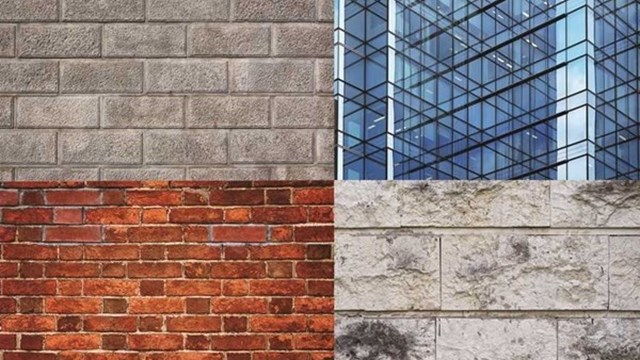
Concrete is the most prevalent building material in existence today, though most people probably don’t notice how widely used the material is until it begins to break up in front of their homes, or falls off of their buildings, roads and bridges. Despite the ubiquity of concrete, the questions of who has the expertise to do repairs on concrete structures and how such repairs should be properly done weren’t being fully addressed even a few decades ago.
To fill that gap in knowledge, and to develop and maintain standards, industry professionals created the International Concrete Repair Institute (ICRI) in 1988. The group’s mission is to be a leading resource for education and information to improve the quality of repair, restoration and protection of concrete and other structures in accordance with consensus criteria established by industry professionals. A push to build such consensus was another driving force behind the organization's founding.
Off to a Slow Start
The ICRI’s formation began with an industry-wide outcry in February 1988, when attendees at the annual World of Concrete trade seminar voiced great frustration over the lack of industry standards and guidelines for concrete repair.
Attendees were also concerned with growing numbers of unqualified contractors working in the industry who were not properly trained, and who were underbidding qualified contractors, despite not having proper knowledge of surface preparation, equipment, materials and techniques. Clients were dissatisfied—often paying for multiple repairs that weren’t done correctly the first time.
Of even more concern to reputable contractors were systemic problems in the industry that impacted not just some companies' bottom line, but also the overall safety of structures being built and repaired nationwide. Lack of standards and a tide of unqualified contractors put unwitting building residents at risk of being hurt or even killed in a catastrophe—and few were even aware of the danger.
Around that time, the U.S. Army Corps of Engineers released its own figures estimating that 50 percent of concrete repairs being done would fail, says Marjorie Lynch, an engineer with New York-based Simpson, Gumpterz & Hager, Inc. and a past president of the Metro New York chapter of ICRI.
To address these serious concerns and to protect and enhance the reputation of the concrete repair industry, the International Association of Concrete Repair Specialists (IACRS) was formed in Naperville, Illinois, on May 21, 1988. That initial meeting was attended by 66 concrete repair specialists. In 1993, the group changed its name to the International Concrete Repair Institute.
Safer with Newer Technologies
While the repair of concrete structures might bring to mind patch jobs such as quick fills or replacing a section of buckled sidewalk, those jobs are just a small part of the multi-billion dollar concrete repairs industry. “It’s the most commonly used material in the world,” according to ICRI.
Thanks in part to the help and influence of the ICRI, things have drastically changed in the concrete repair industry. Because of ICRI, contractors are generally more qualified, and customers have a higher degree of satisfaction. The Metro NY chapter is wide-ranging, serving members in the New York, New Jersey and Connecticut areas and beyond and is continuing to grow. That growth has enabled the group to have a stronger, wider network and the chapter now has nearly 100 members. The Western New York chapter, which was founded in 1994, typically meets six times per year, and has about 20 members, according to its official website.
Improvements in technology and the ingredients used in concrete repair also have helped to improve safety—and have made doing the job correctly a technical exercise. With fiber-reinforced polymers, chemical applications that help preserve metal reinforcing elements, new coatings to make concrete more resistant to weather and other techniques and materials, contractors can apply space age technology to everyday problems.
Chapter Lifeblood
Strong industry standards protect both the contractor and the customer, according to Elena Danke, president of the Metro New York chapter. The practice of members sharing knowledge and tips with each other helps too. Many New York area concrete repair industry professionals meet and become acquainted through the Metro NY ICRI, and chapters of the organization are now active across the country.
“The Metro New York Chapter of ICRI can help you advance your career through increased knowledge, developing new relationships, and maintaining existing friendships within your chosen industry,” says Danke. “As this year’s president, my goal is to help lead this chapter to a level of success commensurate with the greatest city in the world…with the most reinforced concrete and masonry structures.”
While ICRI’s effort to improve standards and practices is at its core, the Metro NY chapter strives to bring together a network of industry professionals who provide materials and services related to concrete repairs, including engineers, contractors and suppliers. To that aim, the organization is planning five technical sessions featuring industry experts throughout the year and two networking social events, plus an annual golf classic in September 2012 at the Cedar Hill Country Club in Livingston, New Jersey. Nationally, ICRI’s 2012 Spring Convention will be held in Quebec City, Canada, April 18-20. And many Metro New York chapter members are planning to celebrate the 25th anniversary of ICRI that will be held at Tradewinds Island Resorts in St. Petersburg Beach, Florida.
Making Connections
Michael Davila, vice president of the chapter, believes education is the core mission of ICRI. “It’s a good organization for education. There is a niche in the rehab and restoration of structures. Supply houses, vendors, suppliers, contractors and engineers are members of our chapter,” Davila says. “People outside the industry can use Metro NY ICRI as a place to meet these professionals and also to learn about the industry."
In addition to Danke and Davila, other officers of the Metro NY chapter include Alexander Prince, who serves as vice president and works for Glen Cove, N.Y.-based Belzona New York, LLC.; Stephen Franks, of Blok-Lok, Ltd., who serves as chapter treasurer; and William McGloin, who works at Southington, CT-based Special Breaks, and serves as secretary. The Western New York chapter lists Edward Barbiero, NYS Power Authority, as president; Michael K. Lock as vice president; and James Derrigan, of BASF Building Systems as treasurer.
The ICRI has not only contributed to safer, better-built buildings but has helped to save contractors and clients from wasting money and needless aggravation. Having a professional organization involved with standards and practices has taken the industry to another level. For further information about the organization, visit www.icri.org.
Jonathan Barnes is a freelance writer and a frequent contributor to The Cooperator and other publications.






Leave a Comment